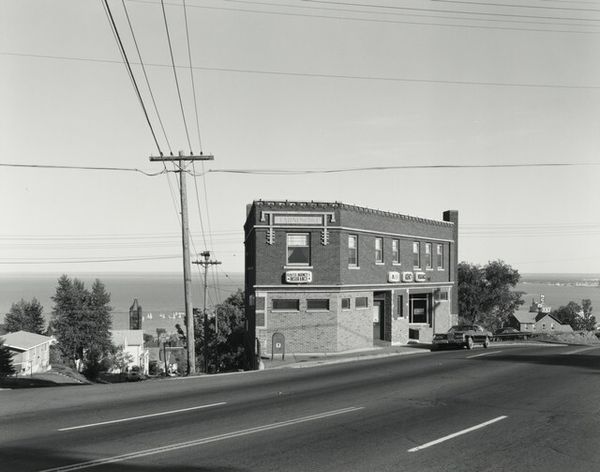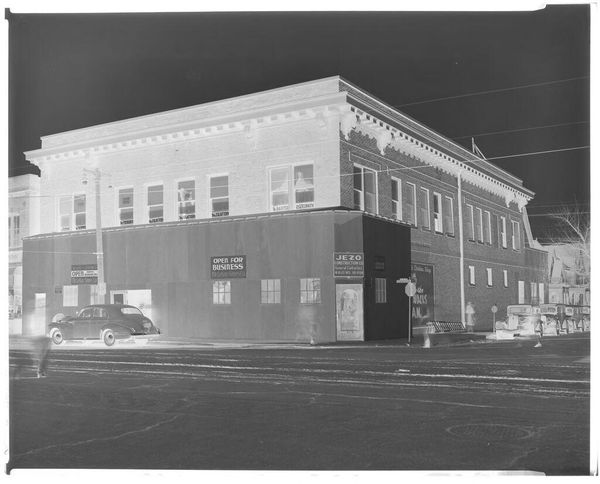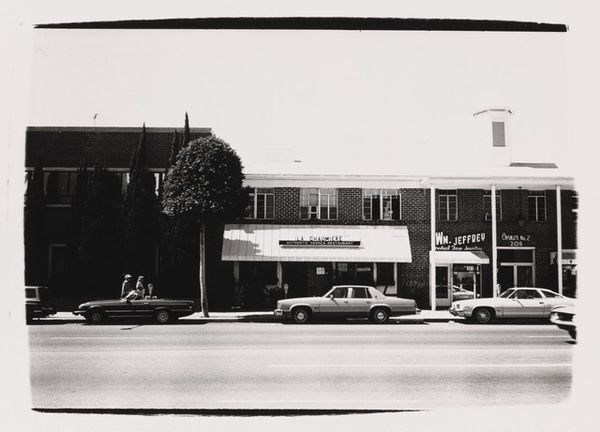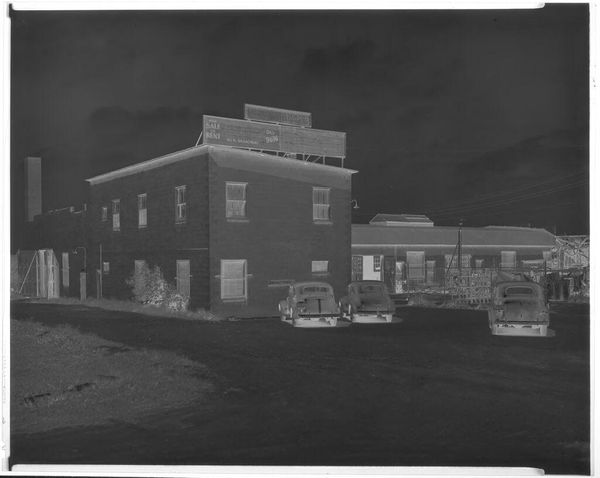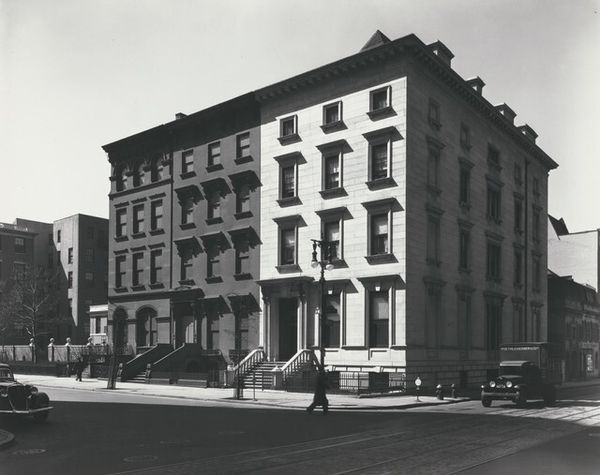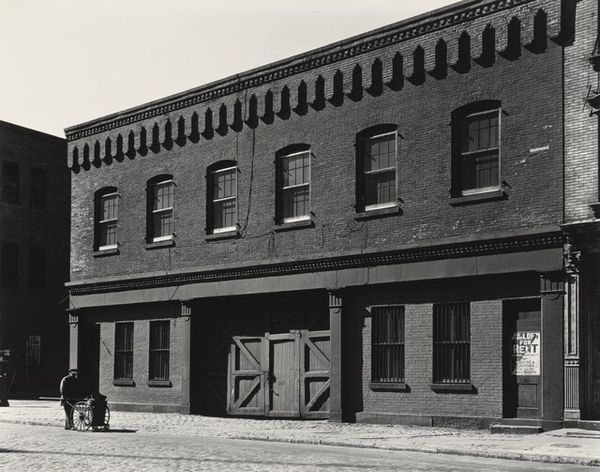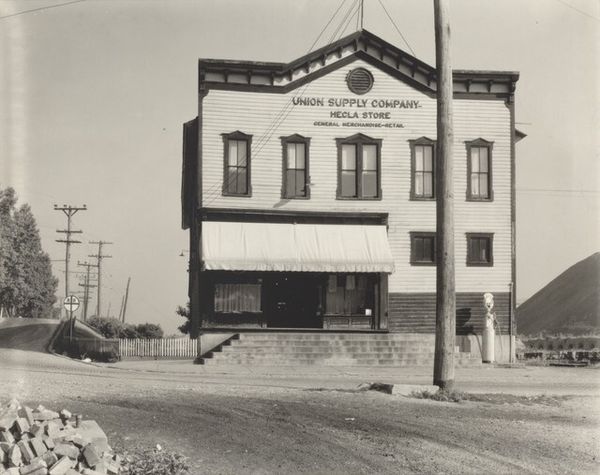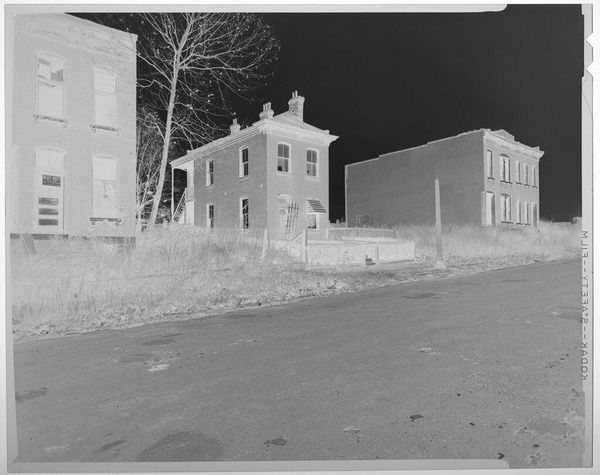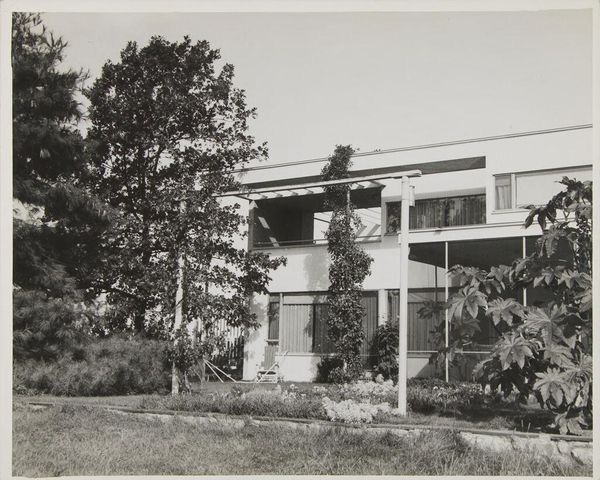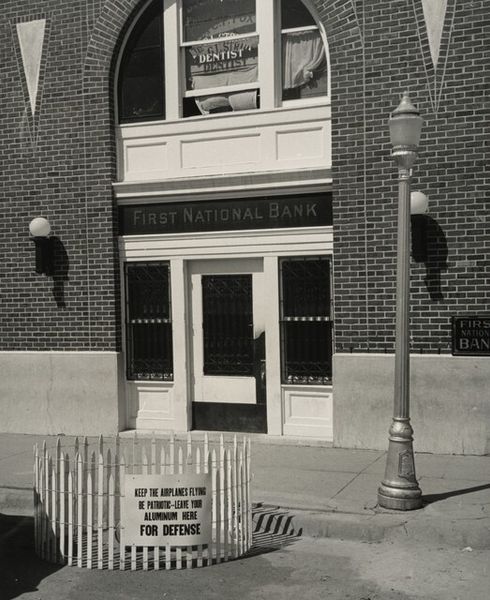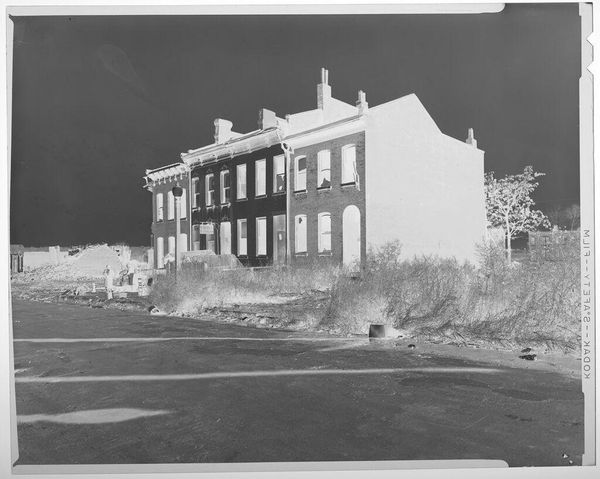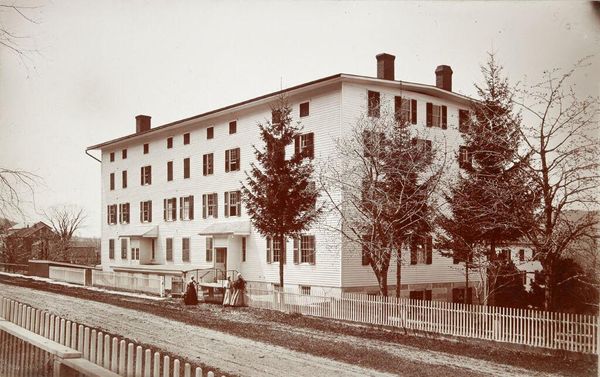
photography
#
urban landscape
#
building study
#
building site documentary shot
#
street view
#
street shot
#
urban cityscape
#
street-photography
#
photography
#
city scape
#
manufacturing plant design
#
geometric
#
cityscape
#
building photography
#
modernism
#
historical building
Dimensions: image: 44.45 × 54.61 cm (17 1/2 × 21 1/2 in.) mat: 99.7 × 79.38 cm (39 1/4 × 31 1/4 in.) framed: 109.22 × 90.17 cm (43 × 35 1/2 in.)
Copyright: National Gallery of Art: CC0 1.0
Editor: This is James Welling’s "Meriden, Connecticut," a black and white photograph from 1988. The image feels very still and quiet to me. It features a brick building near a set of train tracks and I’m immediately struck by the intersection of industry and architecture. How do you interpret this work? Curator: I see this as a poignant commentary on the socio-economic landscape of late 20th-century America. Welling’s choice to photograph an industrial building in Meriden, Connecticut, speaks to the deindustrialization happening in many American cities during that era. The stillness you observe reflects an economic and cultural stagnation. Consider the formal qualities: the geometric forms of the architecture juxtaposed with the implied movement of the railway, does that suggest a tension between past productivity and future uncertainty? Editor: That makes sense. I didn’t think about it that way, I was just responding to what I felt, the sort of muted tone, as you say the stillness, of it all. But that’s really about something broader, not just this one place… Curator: Exactly. Welling is prompting us to consider how economic shifts impact not only our physical environments, but also the collective psyche of communities. Think about who lives and works in these spaces, how shifts impact quality of life, cultural values and perhaps access to healthcare or social mobility. Does it alter how you engage with the photograph now? Editor: Absolutely. Knowing that, the photo becomes much more than a building; it becomes a symbol of a much larger societal shift and speaks to contemporary debates around urban planning. Curator: Precisely. Art like this compels us to interrogate the relationships between place, power, and progress. It moves us to reconsider whose stories get told and whose are omitted. Editor: It's amazing how much context can change the way we understand a seemingly simple photograph. I am glad you called attention to the impact on the people who live and work there because it gives us a new understanding of art as something that influences, and is influenced by, reality.
Comments
No comments
Be the first to comment and join the conversation on the ultimate creative platform.
